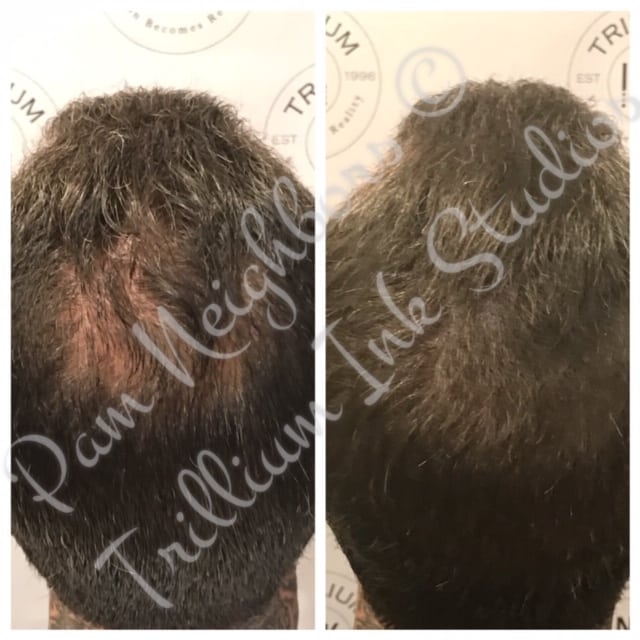SMP
Scalp Micropigmentation with FUE – a Viable Option or Not?
Hair loss – it sucks. And there are a bunch of people out there who suffer from it. So is there a procedure that can restore our hair to how it was before? Give us a full head of flowing locks? And here comes the great news! It is possible with scalp micropigmentation and FUE combined.
FUE is an abridged term for Follicular Unit Extraction (just in case you were curious), however, most of us will know this quite simply as a hair transplant. Yet, as ever, knowledge is always a useful thing so let’s lay this out and find out what that entails.
Follicular Unit Extraction (FUE) Transplants
Follicular Unit Extraction is one of the two primary hair transplant procedures. It is a process whereby a surgeon will take groups of healthy hair follicles that have been unaffected by hair loss and extract them. Thereafter, these groups of hair follicles are implanted into the zones experiencing hair loss. Slowly but surely the grafted follicle will take hold and begin to grow again of its own accord.
Anyone who opts for a follicular unit transplant will probably ask the question when their new hair will show through. It’s crucial to note that hair growth is a pretty slow procedure. Growth signs can take upwards of three to four months and it’s common for transplanted hair to fall. The reason is the new hair pushes the actual donated hair out. Meaning the follicle that has been transplanted is working.
Hair transplants have come a long way over the years. The treatment is more commonplace and surgeons are increasingly adept at producing transplants with less visible scarring. However, the major drawback is often the healthy site where the extraction takes place isn’t abundant enough to produce the required density on the donor site. And this is the reason that more and more people are turning to scalp micropigmentation with follicular unit extraction.
Scalp Micropigmentation and Follicular Unit Extraction Transplants Combined
If you are looking to top-up your FUE with SMP the initial stage is waiting until new hair growth has begun, post-transplant. This is a crucial step in the procedure as assessments cannot be made until the full picture is in view. Once there are assurances that the FUE transplant has been successful a technician will find a best-fit solution concerning scalp micropigmentation to rectify the density issues.
Scalp Micropigmentation works by a technician implanting specifically designed and natural pigments lightly underneath the outer layer of your skin, known as the Epidermis. These pigments are implanted using a machine equipped with a microneedle and the depth of pigment implant is crucial. They should be on the upper surface layer of the Dermis which sits just underneath the Epidermis. When the microneedle pinpricks have fully healed over, the result is an indelible marking, which will fade over time, which sits underneath the existing hairline to create an appearance of a fuller head of hair.
If you are considering combining scalp micropigmentation with FUE we are always happy to discuss options. To do this, it’s just a simple case of reaching out to us here at the clinic to talk through various treatments.
